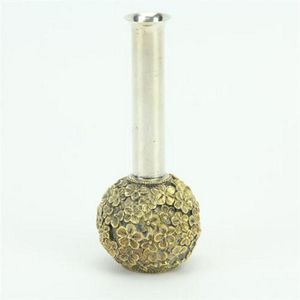French Renaissance Cast Iron Fire Guard
You must be a subscriber, and be logged in to view price and dealer details.
Subscribe Now to view actual auction price for this item
When you subscribe, you have the option of setting the currency in which to display prices to $Au, $US, $NZ or Stg.
- Grotesque - Grotesque decoration is any fanciful ornament applied to furniture and decorative arts, and includes distorted faces, mythical animals such as satyrs and sphinxes and less frequently fantastical fruit and flower forms.
The Martin Brothers who set up their pottery at the end of the nineteenth century in Southall, Middlesex derived their fame from their hand made models of grotesque stoneware birds. - Griffin / Griffon / Gryphon - A griffin, also known as a griffon or gryphon, is a mythical creature with the body of a lion and the head of an eagle. It is typically depicted as a powerful and majestic beast, with the body and legs of a lion and the head, wings, and talons of an eagle. The griffin is widely recognized as a symbol of strength, courage, and guardianship, and has been used in a variety of cultures throughout history.
In ancient mythology, the griffin was often associated with the gods and was considered a symbol of divine power. In ancient Greece, for example, the griffin was associated with the sun god Helios, while in ancient Egypt, it was associated with the goddess Hathor. In medieval European heraldry, the griffin was used as a symbol of strength, valour, and protection, and was often featured on the coats of arms of noble families. - Anthemion - An anthemion is a classical decorative design element based on the acanthus flower that consists of a central circular or oval motif surrounded by radiating petals or leaves. It is often used as a border or frieze in architecture, furniture, and other decorative arts. The anthemion is derived from the palmette, a motif that was popular in ancient Greek and Roman art and architecture. It is often associated with the classical world and with Neoclassical style, and it is often used to add a sense of grandeur and formality to a design. The anthemion is also known as a honeysuckle or honeysuckle ornament. It continues to be used in a variety of contexts today, and it is often admired for its elegant and decorative qualities.
This item has been included into following indexes:
Visually similar items

A large emerald and diamond cluster pendant on chain, 18ct white gold, made as a very large oval shaped cluster pendant, featuring a central faceted oval emerald weighing approximately 21.90ct, claw set, medium deep green in colour, framed by eight brillia

English hallmarked sterling silver Elizabeth II stem vase by Stuart Devlin having a rounded base with five leaf clover work with gilt detail. London, 1977, maker Stuart Devlin, height 12 cm, weight 168g

A pair of 19th century Coalport floral decorated twin handled vases. 37 cm high

A large and early Royal Doulton Lambeth jug by Hannah Barlow (act.1871 - 1913), decorated sgraffito to the buff ground with a herd of ten goats in an extensive rural landscape, tapering cylindrical shape, the handle and the body adjoining the handle decora
